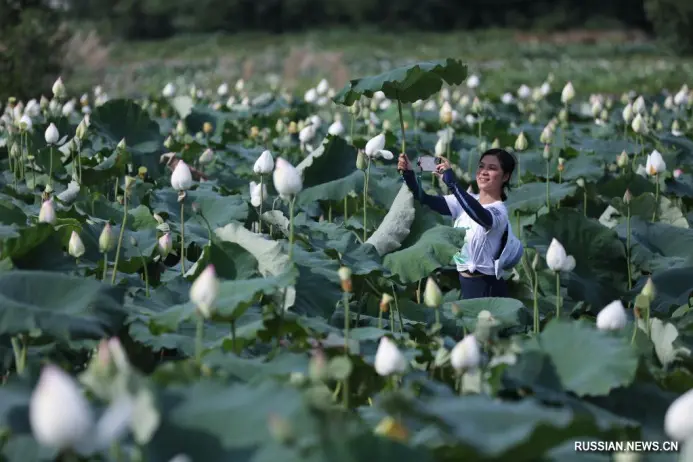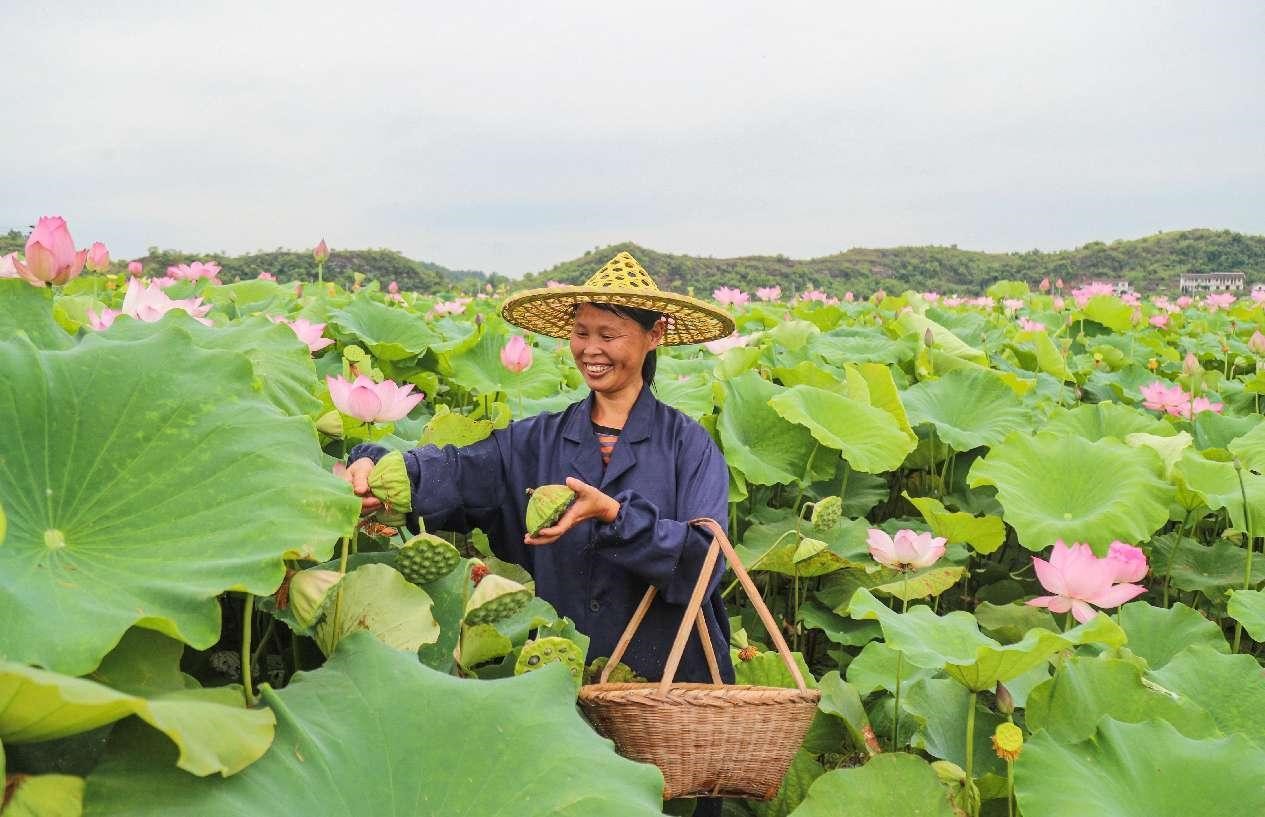

339

In early spring, a white lotus distribution center in Guangchang County, east China's Jiangxi Province, is in full swing as customers choose from piles of white lotus seeds.
Lotus has been grown in Guangchan since the Tang Dynasty (618-907) and on an industrial scale since the Qing Dynasty (1644-1911).

Today, a white lotus market has formed here, with thousands of agricultural brokers involved in the trade and transportation of seeds. The average daily trade volume of white lotus seeds reaches about 50 thousand kilograms. The county has become the distribution and pricing center for aquatic plant seeds in China.
In addition, the county has established a White Lotus industrial chain, with an annual output exceeding three billion yuan (US$416.8 million). The secret to the county's thriving white lotus industry lies in magical seeds grown in space.
Guangchang White Lotus Research Institute, founded in 1984, sought to cultivate new varieties of lotus seeds. However, no matter how hard the researchers tried, the yield of lotus seeds per mu (Chinese unit of area) of seeds remained at 50 kilograms.
In 1994, Liu Guangliang, who headed the institute at that time, learned that China was conducting space breeding to mutate seed genes.
That same year, researchers sent 442 lotus seeds into space, selected from more than 10 varieties of lotus. The lotus seeds underwent cosmic mutation for 14 days and were then sent back to the institute. After classifying and numbering the seeds by variety, employees sowed each seed in a separate container for further propagation.

At first, over 180 lotus seeds did not germinate. It turned out that the sun's rays in space were strong enough to cause some weak seeds to fail to germinate. To ensure that the remaining lotus seeds would germinate, Liu and team members worked diligently for several months. Without temperature-controlled incubators, they achieved encouraging results: some varieties showed early ripening and produced more flowers than conventional varieties. This indicated very high yield potential.
These unique varieties were then propagated several times. After four years of careful selection, a new variety called “Cosmic Lotus No. 36” was created, characterized by growth duration, number of flowers, large lotus seed pods, and high ripening speed. The yield of seeds of the new variety exceeded 120 kilograms per mu.
In 1999, Guangchang began experimental landing of Space Lotus No. 36 at more than 20 landing bases. At first, farmers who grew traditional lotus varieties were not interested in the new variety. Inspired by the institute's technicians, Xie Changjun, then head of Xialan Village in Xujiang City, Guangchang Province, took the initiative to plant a cosmic lotus on the four mu of land.
When summer arrived, the cosmic lotus exceeded all Xie's expectations: the average harvest of lotus seeds per mu farmland that year reached 130 kilograms. This created a sensation throughout the city, with crowds of people lining up in the fields to buy Xie lotus seedlings.
In just a few years, the area planted with space lotus in Guangchang exceeded 100 thousand mu (10 hectares). Since then, Cosmic Lotus No. 36 began to spread throughout China.